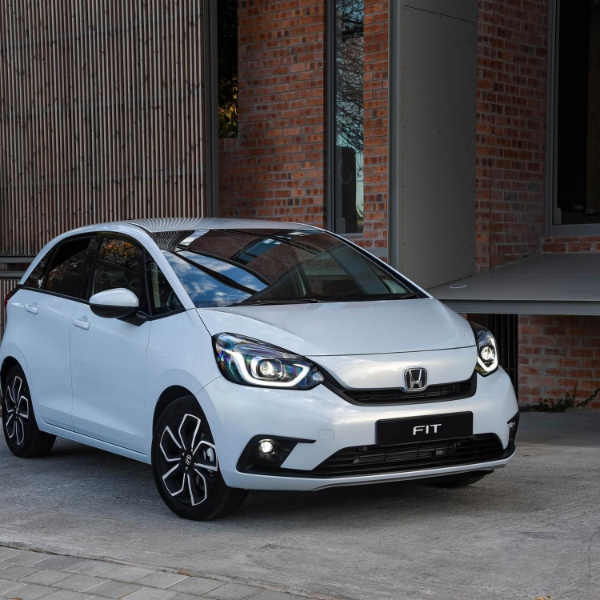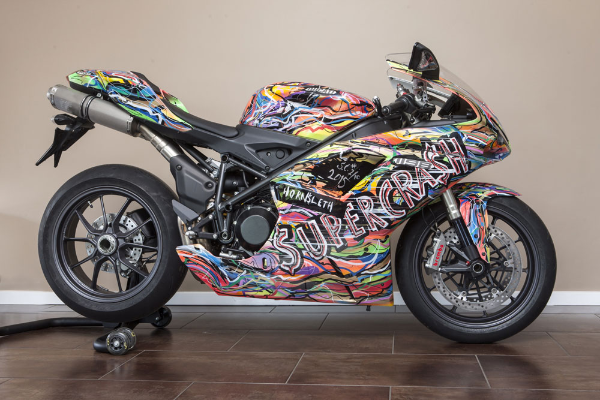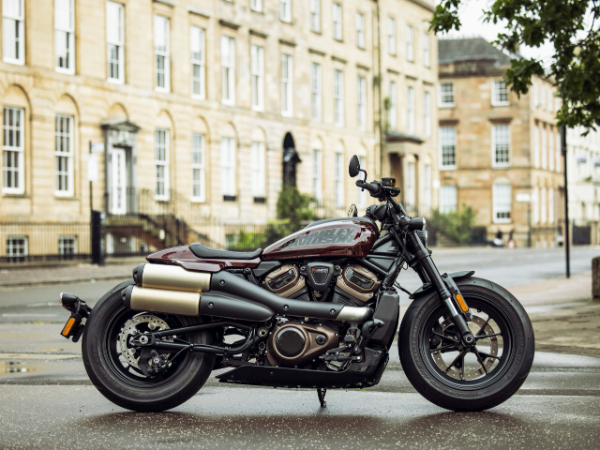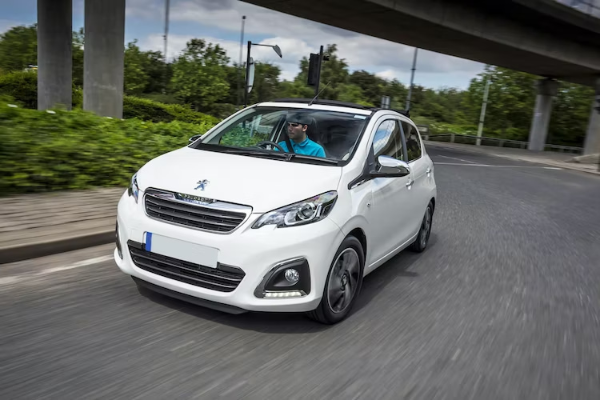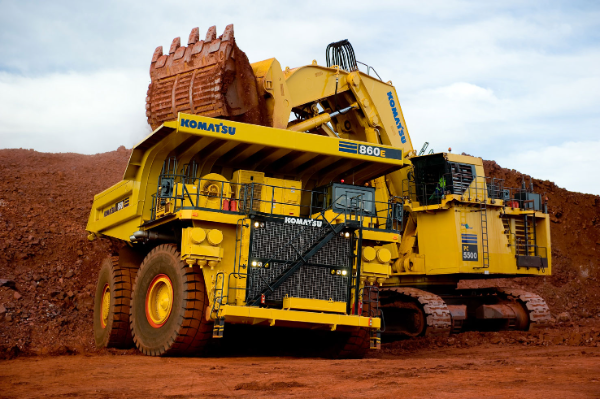Spacious new Hyundai Tucson arrives with revolutionary and ambitious look
Hyundai’s all-new, fourth-generation Tucson SUV has arrived in the local market with a revolutionary and ambitious new look that follows the company’s “Sensuous Sportiness” design identity, and larger dimensions to offer a spacious, luxurious interior and a superior drive.
In terms of design, the all-new Tucson is not only an evolution, but a revolution. It is no wonder that it was chosen to make its Hollywood debut in Sony Pictures’ Spider-Man: No Way Home film.
Since its first launch 16 years ago, the Tucson has become Hyundai’s best-selling SUV with 7 million sales globally. In South Africa, the 1st-generation Tucson was one of the models that placed the Hyundai brand squarely on the map. Its popularity continued, because 15 346 units of the previous, 3rd-generation Tucson were sold locally.
“We have had significant success with the Tucson in South Africa – it soon became the mainstay of our range after its local introduction in 2004. The new Tucson is another step up both in build and design quality, with a superior ride,” says Stanley Anderson, sales and operations manager at Hyundai Automotive South Africa.
Design
The all-new Tucson represents a revolution for Hyundai in design terms. Overall, it features a bigger and wider body than its predecessor. Its muscular stance combines sharp angles and dynamic proportions with rich surfaces, ensuring a progressive look without compromising on Tucson’s rugged SUV heritage. It is the first Hyundai SUV to be developed according to the company’s “Sensuous Sportiness” design identity.
“The mission of ‘Sensuous Sportiness’ is to elevate the emotional qualities of automotive design. We want our customers to feel moved. With the all-new Tucson, we are introducing its ultimate evolution and a definitive statement about Hyundai’s unstoppable forward momentum,” says SangYup Lee, senior vice president and head of the Hyundai Global Design Centre.
“Tucson’s advanced, experimental design is true to its pioneering spirit and raises the game in the industry’s most competitive segment.”
Prominent geometric patterns known as “parametric jewels” appear throughout the SUV’s design, giving it a progressive character. The most prominent display of these is on the vehicle’s front grille, where Parametric Hidden Lights provide a strong first impression. When the lights are off, the front of the vehicle appears covered in dark, geometric patterns, with no distinction between the signature LED Daytime Running Lights (DRLs), which are seamlessly integrated into the grille.
Thanks to new half-mirror lighting technology, when the DRLs are switched on, the dark chrome appearance of the grille transforms into jewel-like shapes, bringing an eye-catching element to an otherwise sleek appearance.
The new Tucson’s side profile conveys an impression of powerful forward motion. The long hood and level roofline coupled with a long wheelbase and short overhangs reflect a ready-for-anything dynamic character.
Parametric jewels also feature as a prominent design element on the side of the vehicle. Chiselled surfaces create a striking contrast between the car’s sleek silhouette and its cab-forward stance, suggesting forward motion even when standing still. Taut athletic shapes seamlessly merge into angular wheel arches.
On the rear, wide tail lamps with parametric hidden light details continue the design theme. The new Tucson’s rear bumper also integrates parametric pattern details with a three-dimensional effect, coupled with a sporty trim. It is also the first Hyundai model to apply a hidden rear wiper, which sit under the spoiler.
Customers can choose from seven exterior colours, Shimmering Silver, Silky Bronze, Phantom Black, White Cream, Crimson Red and Deep Sea.
Interior
With a range of new convenience features, Hyundai offers even more comfort for all-new Tucson customers.
For the first time in a Hyundai vehicle, the all-new Tucson’s hidden type Multi-Air Mode technology consists of a combination of direct and indirect air vents for air conditioning and heating to create a gentler air flow. When this mode is activated, the air is dispersed to the new multi-air slots in the front, in addition to the normal air vents.
The overall volume of moving air remains the same and is therefore just as effective at changing the temperature, but the dispersion of the moving air reduces direct air contact with passengers. This mode can be switched on and off based on the preference of the driver.
The three-zone climate control now caters to passengers in the rear seats in addition to occupants in the front of the vehicle. In addition, ventilated and heated seats in the front provide further comfort for the driver and front passenger alike in the Elite derivatives.
The all-new Tucson is 150 mm longer, 15 mm wider, and the wheelbase is 85 mm longer than the previous generation, making it more spacious than ever before. As a result, rear passengers enjoy additional legroom. Meanwhile, boot space has been increased, offering 539 litres of luggage capacity with the seats up and up to 1 860 litres with the seats folded. The rear seat-backs of the all-new Tucson can be folded forward in a 60:40 ratio.
Entering the all-new Tucson’s sophisticated and spacious interior is like walking into a neatly organised room where everyday concerns disappear. Inside, space, technology and information intersect harmoniously. Featuring sensuous design elements inspired by waterfalls, twin silver trim lines emanate from the centre console to the rear doors accenting premium materials in complementary neutral tones.
The seamless integration of segment-leading technology provides all-new Tucson customers with an advanced and fully customisable digital experience. The new Audiovisual Navigation (AVN) touch screen fills the centre of the vehicle. Hyundai’s designers dispensed with physical knobs and buttons, so all AVN, heat, ventilation and air conditioning functions are controlled via touch, making it the first Hyundai model to feature a full touchscreen console.
High-quality soft-touch materials appear throughout the interior, lifting the look and feel to a new level, while new indirect air vents start from the doors and flow to the centre console.
The evolution of Tucson’s interior layout led to a lower instrument display and removal of the gauge cluster housing around the 10.25-inch digital cluster, enhancing the feeling of openness inside. The broad ridge of the dashboard blends seamlessly with the doors, wrapping around front occupants. These futuristic features provide an even more progressive feeling and bring new levels of high-tech design value to customers.
The Premium derivative features a cloth seat covering, while the Executive and Elite variants have artificial leather seats.
Comfort and convenience
The all-new Tucson is equipped with a range of comfort features, including Multi-Air Mode, three-zone automatic climate control and heated front seats, and ventilated front seats for the Executive and Elite derivatives.
Apple CarPlay and Android Auto cell phone connectivity, a standard feature across the range, allows customers to mirror the functionality of their Apple and Android smartphones in a simplified and convenient manner. This feature is available wirelessly with the 8-inch Display Audio.
Other infotainment and connectivity features on the all-new Tucson include a premium sound system for an enhanced listening experience, a wireless charging pad in the centre console, and front and rear USB ports for even more convenience, particularly on long journeys.
The Elite variants are equipped with a panoramic glass sun roof.
Safety
With advanced driver-assistance systems and a wide-ranging active safety package, the all-new Tucson delivers even more peace of mind for Hyundai customers.
The new Tucson is fitted with a six-airbag system: front and side airbags for the driver and front passenger, and curtain airbags which also offers protection for rear occupants. The outer seats on the rear bench have ISOFIX latching points for fitment of child protection seats.
The all-new Tucson is also equipped with the latest Hyundai SmartSense active safety and driving assistance features for even more assurance. The Hyundai SmartSense active safety and driving assistance features in the new Tucson include:
In the Executive derivative:
Blind-spot Collision Warning (BCW): monitors rear corners creating a visual alert appears on the exterior mirrors if a vehicle is detected. If the driver activates the indicator, an audible signal is emitted.
Rear Cross-traffic Alert (RCA): reduces the risk of collision with approaching traffic when reversing out of narrow areas with low visibility by alerting through audio and visual warning;
In the Elite derivatives:
Blind-spot Collision Avoidance Assist (BCA): uses rear radars to monitor rear corners. If another vehicle is detected, a visual alert appears on the exterior mirrors. Where necessary, BCA emits an audible warning and applies differential braking;
Forward Collision-Avoidance Assist (FCA): this autonomous braking function can detect cars, pedestrians and cyclists;
Lane Keeping Assist (LKA) helps prevent accidental lane departure by sensing road markings, automatically steering the vehicle if necessary.
Lane Follow Assist (LFA): automatically adjusts the steering to help keep the vehicle centred in its lane;
Smart Cruise Control (SCC): this regulates vehicle speed and maintains the distance to other vehicles in front;
Rear Cross-traffic Collision Assist (RCCA): applies the brakes while reversing if a rear collision from a passing vehicle is detected;
Rear Cross-traffic Alert (RCA);
Fatigue Detection/Driver Attention Warning (DAW) is a driver protection feature which helps monitor driving patterns in order to detect fatigued driving and prevent potential accidents; and
High Beam Assist (HBA): a system that automatically adjusts the headlamp range (switches between high beam and low beam) according to the brightness of other vehicles and road conditions.
Powertrains
Two 4-cylinder engines – a naturally aspirated 2-litre petrol and a 2-litre turbodiesel – are used as powerplants for the new Tucson in South Africa. The Smartstream G 2.0 MPI petrol engine, linked to 6-speed automatic transmission, does duty in the Premium, Executive and one of the Elite variants, while the Smartstream D 2.0 turbocharged diesel engine, coupled with an 8-speed transmission, is used in the other Elite derivative.
The 2-litre petrol engine delivers 115 kW peak power at 6 200 r/min. and 192 Nm peak torque at 4 500 r/min. The turbodiesel boasts with 137 kW peak power at 4 000 r/min., and 416 Nm maximum torque between 2 000 and 2750 r/min.
Fuel consumption in a combined test cycle was measured at 8,9 litres per 100 km for the 2-litre petrol variants, while the turbodiesel Elite uses 7,9 litres per 100 km.
The eight-speed transmission coupled with the turbodiesel engine in the Elite variant provides quick and crisp shifts for an engaging and efficient driving experience. This automatic transmission adds ratio range at both the top and bottom of output speeds allowing for extra thrust off-the-line and a quieter, more fuel-efficient trip on the interstate.
A multi-disc and individually controlled hydraulic channel torque converter improves responsiveness by expanding the direct connection band, while a downsized oil pump and double ball bearings minimize frictional losses.
All four variants are driven through the front wheels. Four drive modes – Eco, Smart, Normal and Sport – are available, with selection by a switch on the middle console behind the gear lever. The Smart driving mode offers a blend of economical driving, switching to Sport mode when the system senses the driver’s urgency.
Ride and handling
The all-new Tucson has been developed and tested in Europe. It has undergone accelerated durability tests and dynamic testing on the most demanding race track in the world, the famous Nürburgring Nordschleife. This is in addition to rigorous public-road testing throughout Europe, from the coldest winter testing conditions in Sweden to trailer testing in the Alps and hot weather testing in the south of Spain.
The conventional suspension dampers use new valve technology that offers more tuning flexibility for an improved ride. A MacPherson strut on the front and multi-link suspension on the rear ensure good levels of comfort and handling.
The increased torsional strength of the new Tucson’s body structure also ensures a very stable and surefooted ride, while it also ensures improved safety for the vehicle occupants in case of a collision.
Drivers who select “Sport” mode will experience a sharper steering feel and a greater sense of precision when driving on more challenging roads.
Hyundai has developed a wide variety of tyre options for the all-new Tucson, and three aerodynamic wheel choices: A 17-inch alloy for the Premium derivative; an 18-inch alloy for the Executive variant, and a 19-inch alloy for the Elite.
In terms of design, the all-new Tucson is not only an evolution, but a revolution. It is no wonder that it was chosen to make its Hollywood debut in Sony Pictures’ Spider-Man: No Way Home film.
Since its first launch 16 years ago, the Tucson has become Hyundai’s best-selling SUV with 7 million sales globally. In South Africa, the 1st-generation Tucson was one of the models that placed the Hyundai brand squarely on the map. Its popularity continued, because 15 346 units of the previous, 3rd-generation Tucson were sold locally.
“We have had significant success with the Tucson in South Africa – it soon became the mainstay of our range after its local introduction in 2004. The new Tucson is another step up both in build and design quality, with a superior ride,” says Stanley Anderson, sales and operations manager at Hyundai Automotive South Africa.
Design
The all-new Tucson represents a revolution for Hyundai in design terms. Overall, it features a bigger and wider body than its predecessor. Its muscular stance combines sharp angles and dynamic proportions with rich surfaces, ensuring a progressive look without compromising on Tucson’s rugged SUV heritage. It is the first Hyundai SUV to be developed according to the company’s “Sensuous Sportiness” design identity.
“The mission of ‘Sensuous Sportiness’ is to elevate the emotional qualities of automotive design. We want our customers to feel moved. With the all-new Tucson, we are introducing its ultimate evolution and a definitive statement about Hyundai’s unstoppable forward momentum,” says SangYup Lee, senior vice president and head of the Hyundai Global Design Centre.
“Tucson’s advanced, experimental design is true to its pioneering spirit and raises the game in the industry’s most competitive segment.”
Prominent geometric patterns known as “parametric jewels” appear throughout the SUV’s design, giving it a progressive character. The most prominent display of these is on the vehicle’s front grille, where Parametric Hidden Lights provide a strong first impression. When the lights are off, the front of the vehicle appears covered in dark, geometric patterns, with no distinction between the signature LED Daytime Running Lights (DRLs), which are seamlessly integrated into the grille.
Thanks to new half-mirror lighting technology, when the DRLs are switched on, the dark chrome appearance of the grille transforms into jewel-like shapes, bringing an eye-catching element to an otherwise sleek appearance.
The new Tucson’s side profile conveys an impression of powerful forward motion. The long hood and level roofline coupled with a long wheelbase and short overhangs reflect a ready-for-anything dynamic character.
Parametric jewels also feature as a prominent design element on the side of the vehicle. Chiselled surfaces create a striking contrast between the car’s sleek silhouette and its cab-forward stance, suggesting forward motion even when standing still. Taut athletic shapes seamlessly merge into angular wheel arches.
On the rear, wide tail lamps with parametric hidden light details continue the design theme. The new Tucson’s rear bumper also integrates parametric pattern details with a three-dimensional effect, coupled with a sporty trim. It is also the first Hyundai model to apply a hidden rear wiper, which sit under the spoiler.
Customers can choose from seven exterior colours, Shimmering Silver, Silky Bronze, Phantom Black, White Cream, Crimson Red and Deep Sea.
Interior
With a range of new convenience features, Hyundai offers even more comfort for all-new Tucson customers.
For the first time in a Hyundai vehicle, the all-new Tucson’s hidden type Multi-Air Mode technology consists of a combination of direct and indirect air vents for air conditioning and heating to create a gentler air flow. When this mode is activated, the air is dispersed to the new multi-air slots in the front, in addition to the normal air vents.
The overall volume of moving air remains the same and is therefore just as effective at changing the temperature, but the dispersion of the moving air reduces direct air contact with passengers. This mode can be switched on and off based on the preference of the driver.
The three-zone climate control now caters to passengers in the rear seats in addition to occupants in the front of the vehicle. In addition, ventilated and heated seats in the front provide further comfort for the driver and front passenger alike in the Elite derivatives.
The all-new Tucson is 150 mm longer, 15 mm wider, and the wheelbase is 85 mm longer than the previous generation, making it more spacious than ever before. As a result, rear passengers enjoy additional legroom. Meanwhile, boot space has been increased, offering 539 litres of luggage capacity with the seats up and up to 1 860 litres with the seats folded. The rear seat-backs of the all-new Tucson can be folded forward in a 60:40 ratio.
Entering the all-new Tucson’s sophisticated and spacious interior is like walking into a neatly organised room where everyday concerns disappear. Inside, space, technology and information intersect harmoniously. Featuring sensuous design elements inspired by waterfalls, twin silver trim lines emanate from the centre console to the rear doors accenting premium materials in complementary neutral tones.
The seamless integration of segment-leading technology provides all-new Tucson customers with an advanced and fully customisable digital experience. The new Audiovisual Navigation (AVN) touch screen fills the centre of the vehicle. Hyundai’s designers dispensed with physical knobs and buttons, so all AVN, heat, ventilation and air conditioning functions are controlled via touch, making it the first Hyundai model to feature a full touchscreen console.
High-quality soft-touch materials appear throughout the interior, lifting the look and feel to a new level, while new indirect air vents start from the doors and flow to the centre console.
The evolution of Tucson’s interior layout led to a lower instrument display and removal of the gauge cluster housing around the 10.25-inch digital cluster, enhancing the feeling of openness inside. The broad ridge of the dashboard blends seamlessly with the doors, wrapping around front occupants. These futuristic features provide an even more progressive feeling and bring new levels of high-tech design value to customers.
The Premium derivative features a cloth seat covering, while the Executive and Elite variants have artificial leather seats.
Comfort and convenience
The all-new Tucson is equipped with a range of comfort features, including Multi-Air Mode, three-zone automatic climate control and heated front seats, and ventilated front seats for the Executive and Elite derivatives.
Apple CarPlay and Android Auto cell phone connectivity, a standard feature across the range, allows customers to mirror the functionality of their Apple and Android smartphones in a simplified and convenient manner. This feature is available wirelessly with the 8-inch Display Audio.
Other infotainment and connectivity features on the all-new Tucson include a premium sound system for an enhanced listening experience, a wireless charging pad in the centre console, and front and rear USB ports for even more convenience, particularly on long journeys.
The Elite variants are equipped with a panoramic glass sun roof.
Safety
With advanced driver-assistance systems and a wide-ranging active safety package, the all-new Tucson delivers even more peace of mind for Hyundai customers.
The new Tucson is fitted with a six-airbag system: front and side airbags for the driver and front passenger, and curtain airbags which also offers protection for rear occupants. The outer seats on the rear bench have ISOFIX latching points for fitment of child protection seats.
The all-new Tucson is also equipped with the latest Hyundai SmartSense active safety and driving assistance features for even more assurance. The Hyundai SmartSense active safety and driving assistance features in the new Tucson include:
In the Executive derivative:
Blind-spot Collision Warning (BCW): monitors rear corners creating a visual alert appears on the exterior mirrors if a vehicle is detected. If the driver activates the indicator, an audible signal is emitted.
Rear Cross-traffic Alert (RCA): reduces the risk of collision with approaching traffic when reversing out of narrow areas with low visibility by alerting through audio and visual warning;
In the Elite derivatives:
Blind-spot Collision Avoidance Assist (BCA): uses rear radars to monitor rear corners. If another vehicle is detected, a visual alert appears on the exterior mirrors. Where necessary, BCA emits an audible warning and applies differential braking;
Forward Collision-Avoidance Assist (FCA): this autonomous braking function can detect cars, pedestrians and cyclists;
Lane Keeping Assist (LKA) helps prevent accidental lane departure by sensing road markings, automatically steering the vehicle if necessary.
Lane Follow Assist (LFA): automatically adjusts the steering to help keep the vehicle centred in its lane;
Smart Cruise Control (SCC): this regulates vehicle speed and maintains the distance to other vehicles in front;
Rear Cross-traffic Collision Assist (RCCA): applies the brakes while reversing if a rear collision from a passing vehicle is detected;
Rear Cross-traffic Alert (RCA);
Fatigue Detection/Driver Attention Warning (DAW) is a driver protection feature which helps monitor driving patterns in order to detect fatigued driving and prevent potential accidents; and
High Beam Assist (HBA): a system that automatically adjusts the headlamp range (switches between high beam and low beam) according to the brightness of other vehicles and road conditions.
Powertrains
Two 4-cylinder engines – a naturally aspirated 2-litre petrol and a 2-litre turbodiesel – are used as powerplants for the new Tucson in South Africa. The Smartstream G 2.0 MPI petrol engine, linked to 6-speed automatic transmission, does duty in the Premium, Executive and one of the Elite variants, while the Smartstream D 2.0 turbocharged diesel engine, coupled with an 8-speed transmission, is used in the other Elite derivative.
The 2-litre petrol engine delivers 115 kW peak power at 6 200 r/min. and 192 Nm peak torque at 4 500 r/min. The turbodiesel boasts with 137 kW peak power at 4 000 r/min., and 416 Nm maximum torque between 2 000 and 2750 r/min.
Fuel consumption in a combined test cycle was measured at 8,9 litres per 100 km for the 2-litre petrol variants, while the turbodiesel Elite uses 7,9 litres per 100 km.
The eight-speed transmission coupled with the turbodiesel engine in the Elite variant provides quick and crisp shifts for an engaging and efficient driving experience. This automatic transmission adds ratio range at both the top and bottom of output speeds allowing for extra thrust off-the-line and a quieter, more fuel-efficient trip on the interstate.
A multi-disc and individually controlled hydraulic channel torque converter improves responsiveness by expanding the direct connection band, while a downsized oil pump and double ball bearings minimize frictional losses.
All four variants are driven through the front wheels. Four drive modes – Eco, Smart, Normal and Sport – are available, with selection by a switch on the middle console behind the gear lever. The Smart driving mode offers a blend of economical driving, switching to Sport mode when the system senses the driver’s urgency.
Ride and handling
The all-new Tucson has been developed and tested in Europe. It has undergone accelerated durability tests and dynamic testing on the most demanding race track in the world, the famous Nürburgring Nordschleife. This is in addition to rigorous public-road testing throughout Europe, from the coldest winter testing conditions in Sweden to trailer testing in the Alps and hot weather testing in the south of Spain.
The conventional suspension dampers use new valve technology that offers more tuning flexibility for an improved ride. A MacPherson strut on the front and multi-link suspension on the rear ensure good levels of comfort and handling.
The increased torsional strength of the new Tucson’s body structure also ensures a very stable and surefooted ride, while it also ensures improved safety for the vehicle occupants in case of a collision.
Drivers who select “Sport” mode will experience a sharper steering feel and a greater sense of precision when driving on more challenging roads.
Hyundai has developed a wide variety of tyre options for the all-new Tucson, and three aerodynamic wheel choices: A 17-inch alloy for the Premium derivative; an 18-inch alloy for the Executive variant, and a 19-inch alloy for the Elite.




